MODEL CARS FUEL GARLAND'S DRAG RACING PASSION
Wed, 2010-04-28 16:32
 When Mike Garland was 5 years old, he began building model cars.
When Mike Garland was 5 years old, he began building model cars.
Now, nearly 50 years later, Garland is still active in building some of the finest model Funny Cars and other race cars out there.
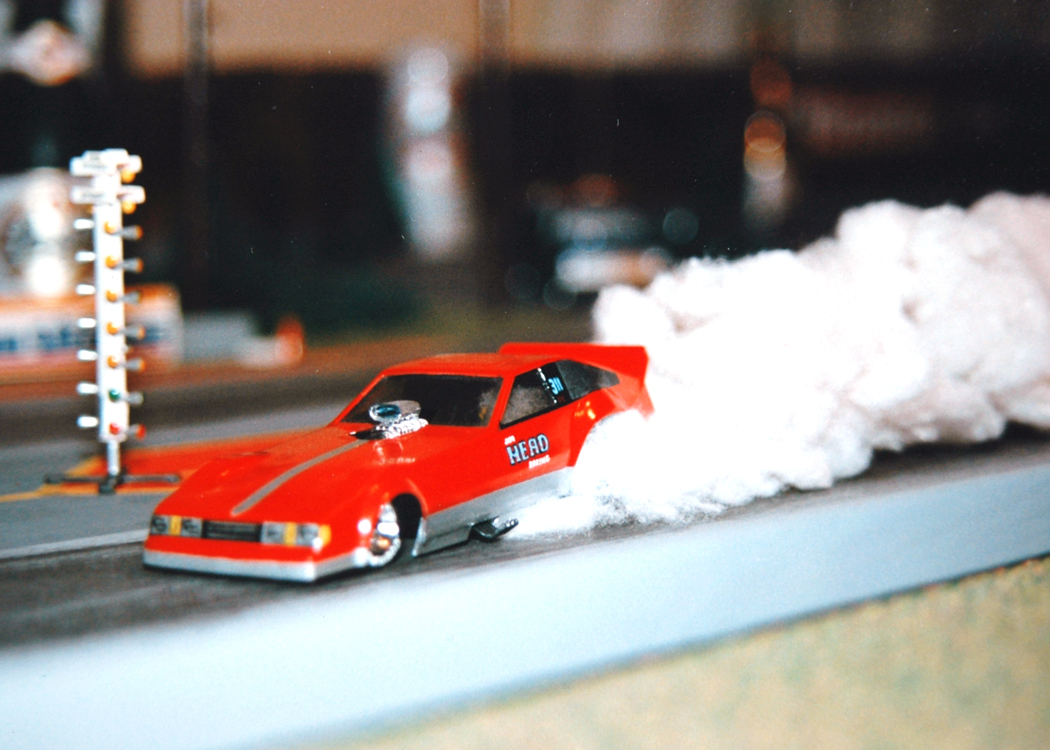
When Mike Garland was 5 years old, he began building model cars.
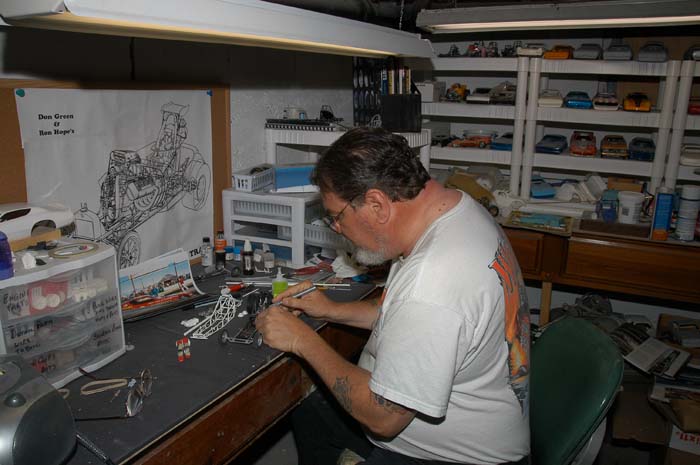
Little did he know, a youthful endevour would become a lifelong passion for Mike Garland.
Now, nearly 50 years later, Garland is still active in building some of the finest model Funny Cars and other race cars out there.
“I started building models when I was 5 years old because I liked cars,” Garland said. “I’m going on my 50th year of building, and I went to my first drag race in 1967 (at Rockford (Ill.) Dragway, now known as Byron Dragway) and I fell in love with it. I was hooked.”
Garland’s hobby began with the cars he could find in stores.
“I started building with the manufactured kits, and I did that for years, but it got to the point that I wanted to build stuff that wasn’t out there,” Garland said. “So, I would paint and hand-letter my own cars to make someone else’s car. There were no decals for these cars that weren’t out there, so I had to hand letter everything I did. If I had a certain body I wanted to use and it wasn’t there, I would take an existing kit and reshape the body and make it the way I wanted it to look.”
Garland doesn’t know the exact number of model cars he has built, but it is the thousands.
“I don’t have hardly any of them left and I wish I did because a lot of them are worth a lot of money right now,” Garland said.
a d v e r t i s e m e n t
Click to visit our sponsor's website

Garland still builds model cars today, but back in the 1980s he took his hobby to the next level.
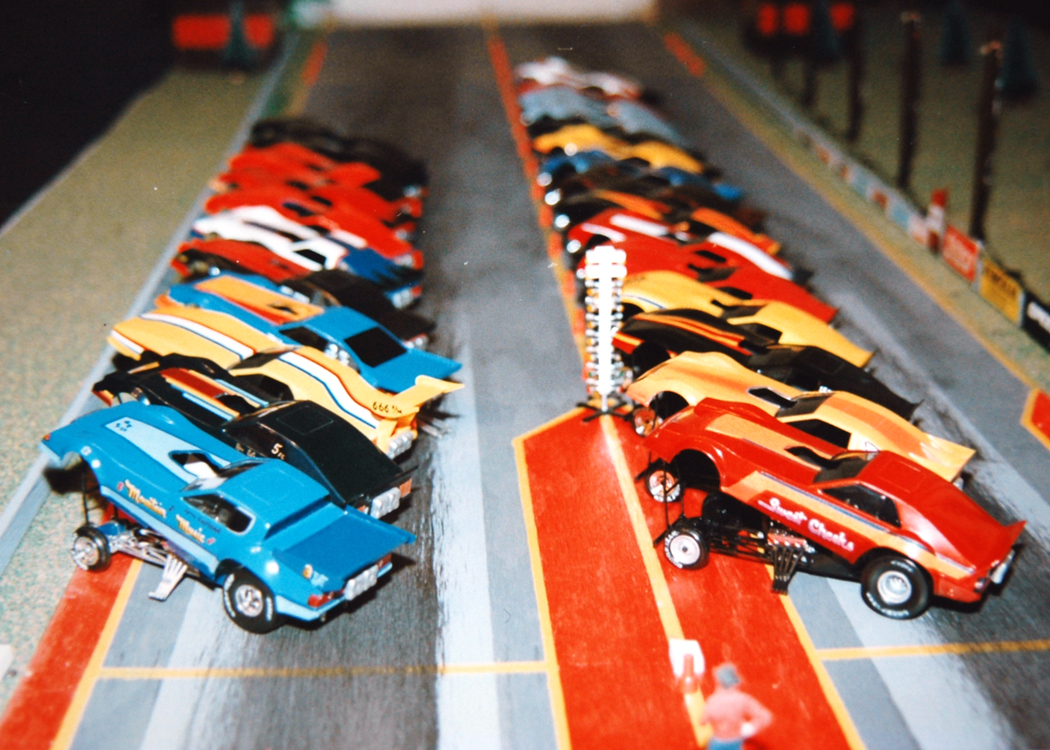
Garland has built model cars to go along with his Greg Zyla game to add a realistic twist. Along with Bret Kepner, he has taken the game to an even more realistic level.
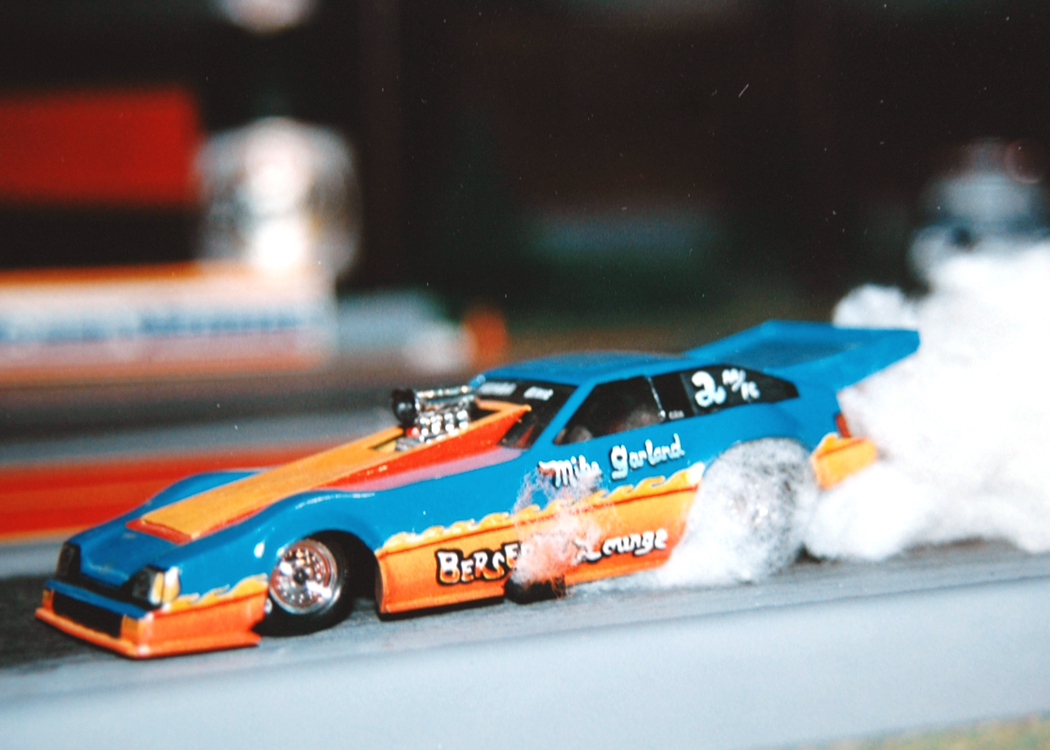

The amount of detail Garland put into making his fleet of race cars was amazing.
“I would literally sit down with one of the EXPs, or the Firebird or the Omni and create the different bodies,” Garland said. “I would take each one, one by one and do them.”
What was initially a hobby for Garland became national news when articles were done about him in a pair of magazines - Super Stock and Drag Racing USA.
“I was just building these cars for myself, but after these articles came out, it just took off,” Garland said.
Garland’s drag racing game was patterned after Greg Zyla’s Vallco Drag Racing Game, but it much more complex. Unlike Zyla’s game, at Garland’s track, he just raced nitro and alcohol Funny Cars. Garland wanted to include Top Fuel dragsters, but he didn’t have any models for them.
“Bret Kepner was involved with me in making the broke decks and everything else,” Garland said. “Anything that could happen in a real race car could happen in this game. We had it even down to where we were rolling a separate dice for reaction time. This thing was very, very advanced. This was a board game that I made into 1/32-scale dragstrip. I had a tower and everything and I had it sitting in my basement.”
Once word circulated about Garland’s drag racing game, he started having an annual event in the winter time where “real” racers would compete at his track at his house, which was in Elburn, Ill., at the time. Elburn is about 90 minutes southwest of Chicago.
“We would have a get together once a year, and like the Chi-Town Hustler bunch would come over and (Mike) Fazer, the guy who had the Chicago Fire, and Tom Motry, the guy who had the “Drastic Plastic” car also would come over. Plus, a bunch of the Midwest alcohol drivers would come in and we would have a game night. We would run it like a manufacturer’s Funny Car race. When we had these races, this game was just wild. We would have 25 to 30 people at the house playing. It was just so much fun.”
a d v e r t i s e m e n t
Click to visit our sponsor's website
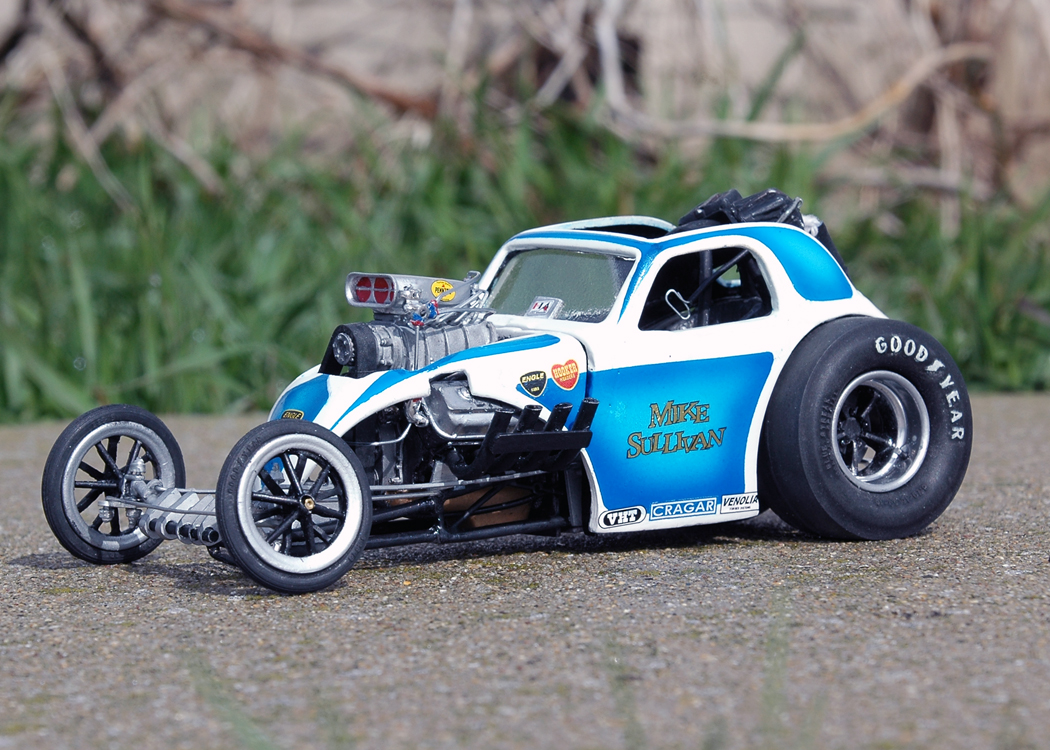
The heyday of Garland’s drag racing board game was from around 1984-86.
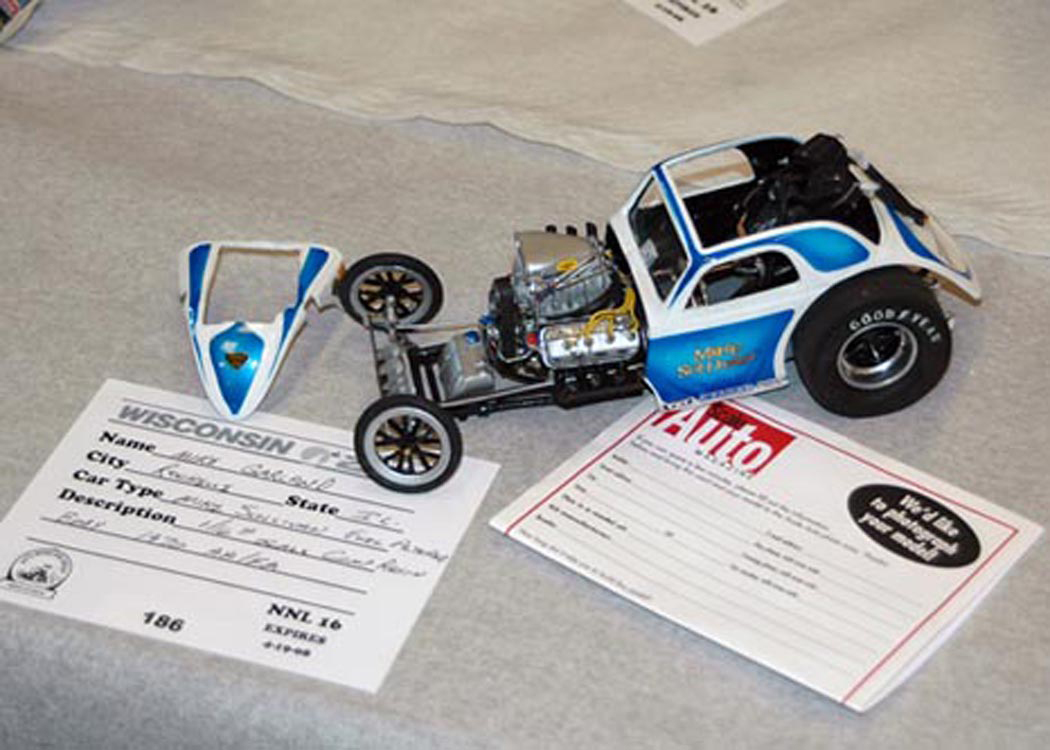
Garland custom built this Mike Sullivan Fuel Altered from his own chassis jig and the end result was a show win. He had some input from Sullivan in building the car.


“We ran the (game night) races for two or three years, but the sport took off so much, that nobody had time to do it anymore,” Garland said.
During the races, each of the participants would get to make two passes in their cars and then the fastest two cars would come back for the finals.
“We had nitro Funny Car and alcohol Funny Car brackets,” Garland said. “I think the winner received a whopping $5.”
Garland also recalled a couple of humorous stories about racers who couldn’t make it to game nights.
“Tommy Johnson Jr. had started driving Funny Cars and he and his dad (Tommy Johnson) senior were going to come over,” Garland said. “Dad couldn’t make it, and it was like a four-hour trip to my house from where they lived in Ottumwa, Iowa. Tommy Jr. wasn’t allowed to drive to my house, but he was allowed to drive a 200 mph alcohol Funny Car. Then, Della Woods couldn’t make it one time, so she would call over the phone and see how her car was running. My long-distance award, meanwhile, went to Jim Jones, he drove a turbo-charged alcohol car, and he was from Indianapolis and he drove all the way to my house, which was about six hours, just to race in the manufacturer’s race we had one night.”
Kepner and Garland took the drag racing game they created to another tier when they both ran a full NHRA schedule in 1986, competing for the Funny Car world championship. They also ran a full IHRA slate for points and a couple of match races.
“He and I both had cars and we ran the complete season and he got all the prices from all the manufacturers and it got down to in this game where you could burn pistons,” Garland said. “You would roll dice and there would be charts for everything. It got so crazy, that you would have parachute failures, crashes, fires, you name it could happen in this game when you rolled the dice. There was a broke deck for each section of the track. If it came up to a roll of the dice when it came to the broke deck, you would flip a card over and it would tell you what was happening.
It cost us probably a half million dollars to run that season, and that wasn’t including crew salaries, motel bills and food. That’s just what it took on the cars themselves to run. We kept track of everything we did in the cars. That $500,000 was the cost to run the cars back then. I would hate to see what it cost now.”
Garland said the last time he ran cars at his track was around 1987 when Phil Elliott came by to do an article on him.
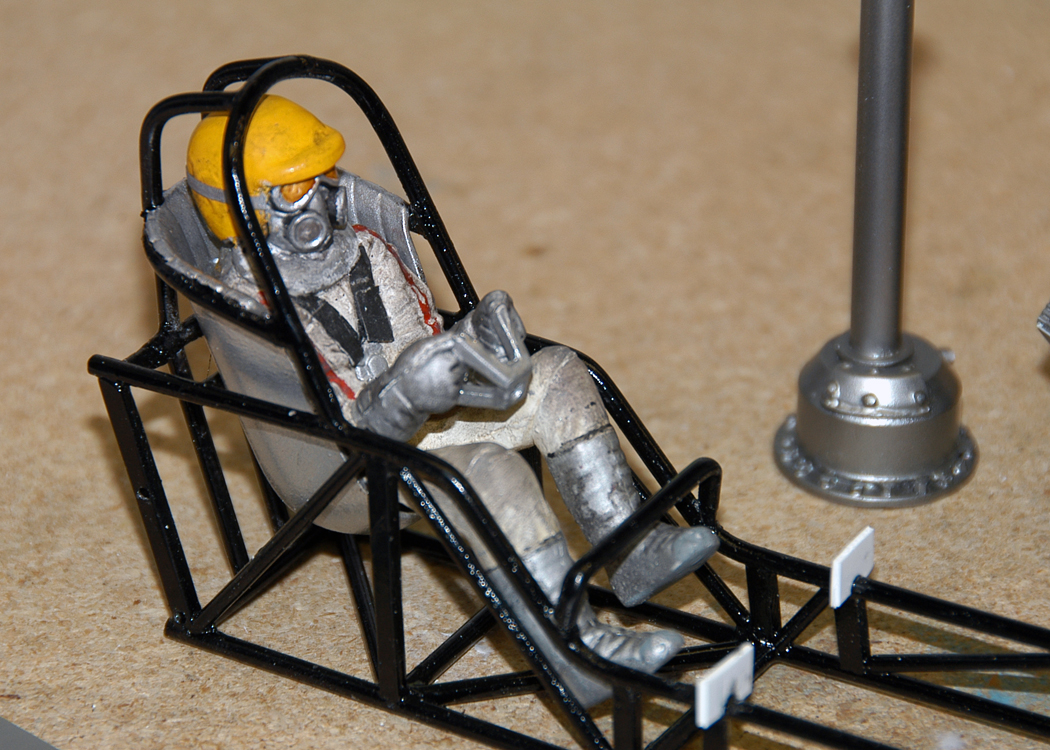
Detail is king in Garland's world as evidenced by these components.
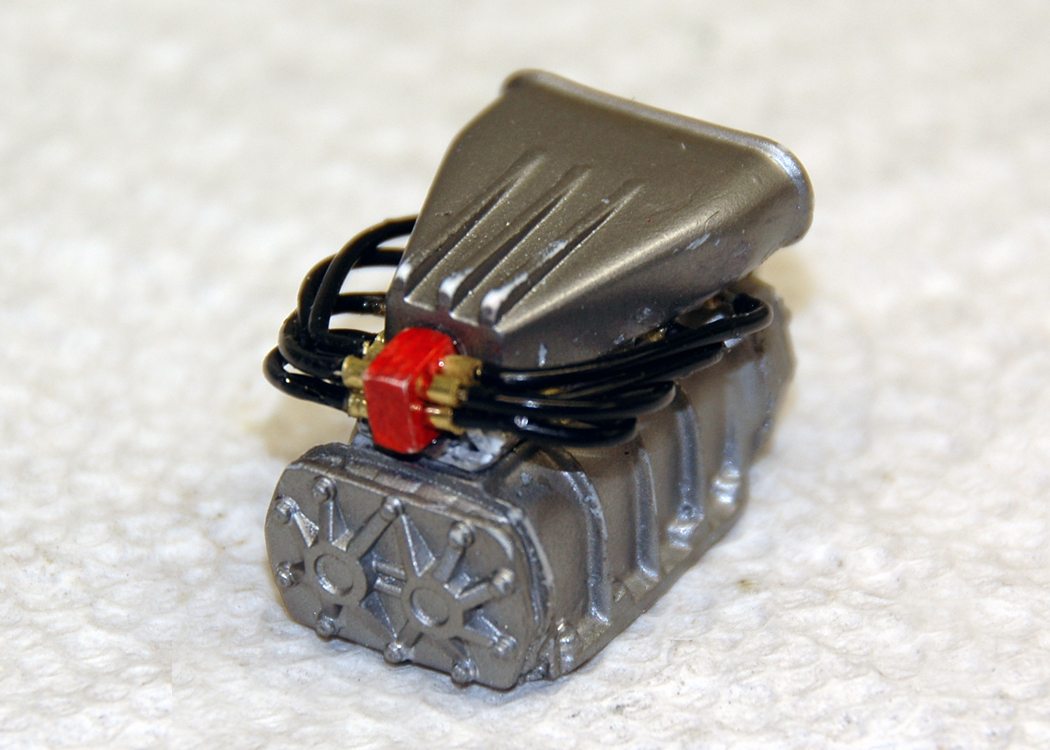

After all these years on the shelf, Garland has plans of bringing the game out of retirement.
“With the Nostalgia craze going on right now, I’ve started making bodies, so I can just do a mold and pop them out, instead of just making each Funny Car hand-by-hand,” Garland said. “More than anything, I want to get the track going to bring the Nostalgia Funny Cars back because they were so cool.”
Garland also wouldn’t completely limit himself to just Nostalgia Funny Cars.
“I wouldn’t mind building some modern day Funny Cars, and if I could, I wouldn’t mind putting a couple of dragsters in there and I would also like to have some Pro Mod cars as well,” Garland said. “I’m looking for a place to put the track because it’s quite large at 1/32-scale. You also have to have
pit space because you have 100 cars sitting there. I have almost all the cars sitting out in the garage in a big Rubbermaid tub. It doesn’t take much to
build the track because it’s just sheets of plywood. I also want to do stuff differently this time. I want to build a wrap around tower, and a couple of ponds and everything else. This place is going to be a show place when it is done. I also think the prize money would have to go up to $20 and a trophy now.”
Garland says his revamped drag racing game also will stick to traditional racing.
“There will be no four-lane dragstrip,” Garland said. “I’m not doing a Four-Wide drag race.”
Garland has several model car projects ongoing, one being to reconstruct Don Schumacher’s 1973 Wonder Wagon Vega. These cars he is doing are 1/16-scale.
“It has all the hood cuttings in it, the real grill, the works,” Garland said Schumacher’s car. “This one has to be right because it is a one-of-a-kind. I’m not molding this body. They will have to make this body.”
a d v e r t i s e m e n t
Click to visit our sponsor's website
Garland actually also became heavily involved in building model cars for model car contests from 1980-92, and he began dabbling in that venue again fairly recently.
GIVING CREDIT:
Garland also wanted to give credit to some other model car builders out there who have helped along the way to continue doing what he loves. The list includes:
Terry Crossley at www.flashpointmotorsports.com , he makes 1/16th scale Funny Car bodies and 1/25th scale Pro Mod bodies.Paul Rowe, he makes 1/16th scale drag parts
Mark Johnson, he makes 1/16th scale Funny car and Dragster parts
Chuck Boerner, he makes 1/16th scale and 1/25th scale decals.
Greg Fox, he makes 1/16th scale Funny Car bodies
Garland admitted he has to scale back his model car contest participation because of his job as the track photographer at Cordova (Ill.) Dragway Park. He has held that position for the past 15 years. Garland also now lives in Fulton, Ill., which is about 15 minutes from Cordova Dragway.
“I’m starting to try and build for me because I’m just so tired of doing the competition stuff,” Garland said. “It’s just really hard. There are some great builders out there, who are really tough to compete against. On my website (www.magic-photos.com), I’m putting together a model car page, so people can go and be able to buy parts and pieces from anywhere in the country. I just can’t ever see myself stop building model cars, it’s what I always done.”
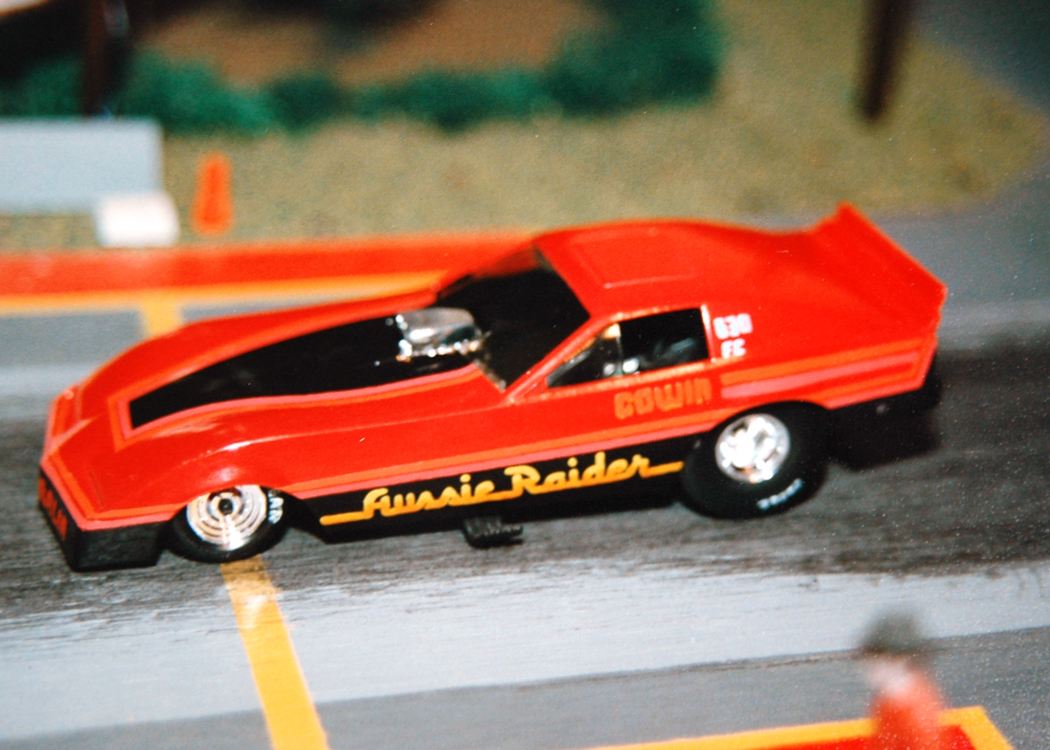
| {loadposition feedback} |
Categories:






